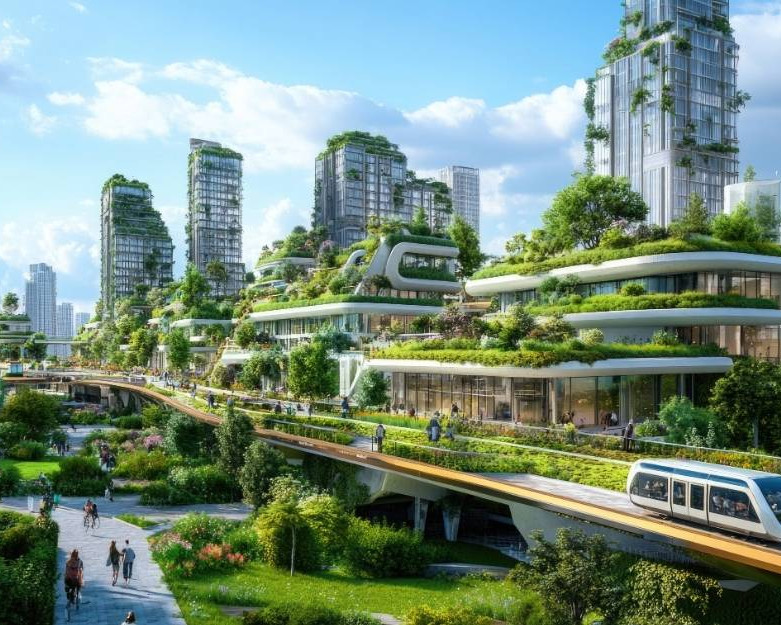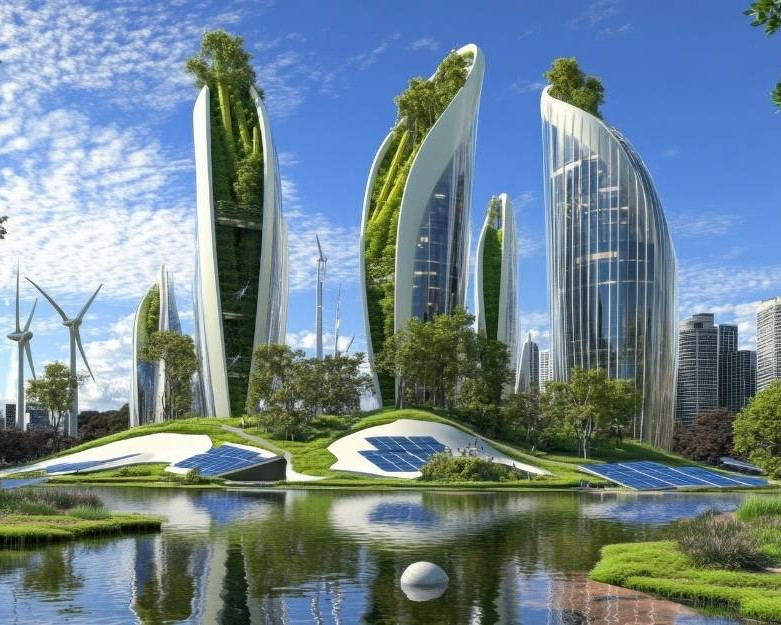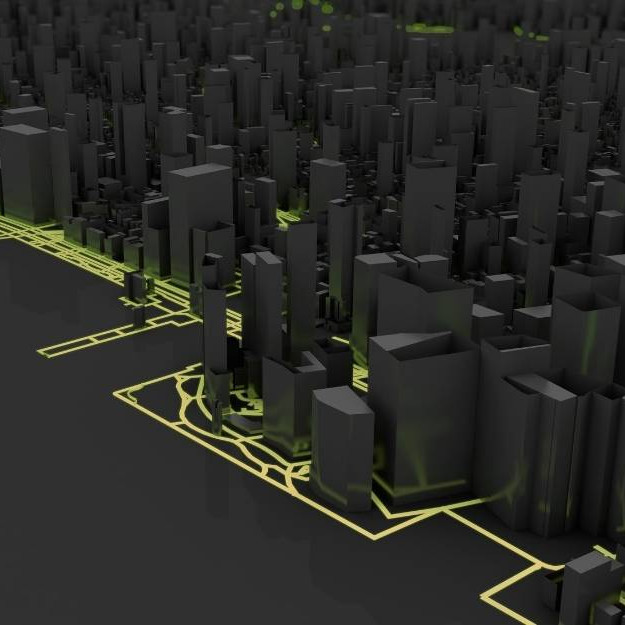Reimagining Cities for People & Planet
The Future of Urban Life
Cities are rapidly evolving, and the way we design, live and move within them has never been more important. Urban living today is defined not only by convenience but also by sustainability, inclusivity, and innovation. As populations grow and resources become more limited, creating cities that balance human needs with environmental responsibility is no longer optional, it’s essential.

A Vision Beyond Growth
Why Sustainable Cities Matter
The modern city is a hub of opportunity but it also presents challenges such as congestion, pollution and unequal access to resources. Sustainable cities address these challenges head-on by prioritizing clean energy, efficient infrastructure, and livable spaces for everyone. The focus isn’t just on building bigger cities, it’s about building smarter, greener and healthier ones that future generations can call home.

Practical Innovations Shaping the Future
Key Elements of Sustainable Cities
Building a sustainable city requires more than ambition, it takes actionable strategies that address real urban challenges. From housing and mobility to waste and resilience, these elements are central to designing spaces where people and the planet can thrive together.
Green Housing
Affordable, eco-friendly and energy-efficient homes.
Smart Mobility
Public transport, cycling paths and electric vehicle hubs.
Waste Solutions
Advanced recycling and circular economy models.
Urban Greenery
Community gardens, rooftop forests and public parks.
Resilient Infrastructure
Climate ready designs built to withstand challenges.

Smarter Tools for Smarter Cities
Technology & Innovation in City Living
Technology is transforming urban life, offering new solutions to old challenges. From AI-powered traffic systems to smart energy grids, digital innovation is reshaping how cities operate. These advancements improve daily convenience, reduce resource consumption and create safer environments. When applied thoughtfully, technology becomes a powerful driver of sustainability helping cities anticipate problems and adapt more efficiently.
Designing for Well-Being
The Human Side of Sustainable Cities
At the core of every city are its people. Sustainable design isn’t just about infrastructure, it’s about fostering well-being and inclusion. By prioritizing accessible housing, walkable neighborhoods, clean air and safe public spaces, cities can enhance quality of life for all residents. A sustainable city ensures that progress benefits not only the economy but also the social fabric that holds communities together.


From Vision to Reality
Looking Ahead: The Path to Resilient Cities
The cities of tomorrow will be defined by the choices we make today. Prioritizing sustainability means committing to innovation, collaboration and resilience. While challenges such as climate change and rapid urbanization remain, the shift toward greener, more human centered urban living is already underway. The path forward requires bold thinking and a willingness to reimagine city life, not as it is, but as it could be.
“A sustainable city is not just about buildings and infrastructure, it’s about creating spaces where people and the planet thrive together.”
Rethink Urban Living
Create Greener, Healthier & More Livable Cities
The opportunity to reimagine our cities is here. Find out how innovative design and sustainability can redefine the way we live, work and connect.
Frequently Asked Questions
Your Questions, Answered
A: A sustainable city is designed to reduce environmental impact while improving quality of life. This includes efficient public transport, renewable energy use, green buildings, accessible public spaces, and policies that support both people and the planet.
A: As global populations grow, urban areas face challenges like congestion, pollution, and limited resources. Sustainable practices help cities remain livable, reduce carbon emissions and promote healthier lifestyles for residents.
A: They provide cleaner air, better mobility, safer housing, and inclusive public services. Residents benefit from lower energy costs, more green spaces, and improved community wellbeing.
A: Yes. Smart city technology, such as energy-efficient grids, AI-powered traffic systems, and data-driven urban planning, helps optimize resources and enhance sustainability goals.
A: Everyday choices like using public transport, reducing waste and supporting eco-friendly businesses contribute to larger sustainability efforts and help shape greener cities for the future.
From Vision to Reality
Looking Ahead: The Path to Resilient Cities
The cities of tomorrow will be defined by the choices we make today. Prioritizing sustainability means committing to innovation, collaboration and resilience. While challenges such as climate change and rapid urbanization remain, the shift toward greener, more human centered urban living is already underway. The path forward requires bold thinking and a willingness to reimagine city life, not as it is, but as it could be.
 © 2025 Act to End Street Sleeping. All rights reserved.
© 2025 Act to End Street Sleeping. All rights reserved.



